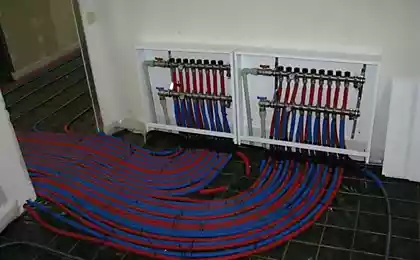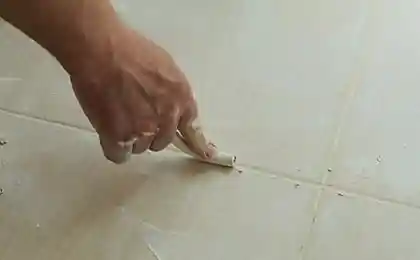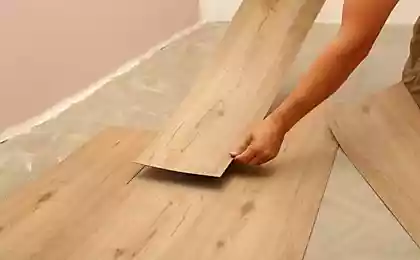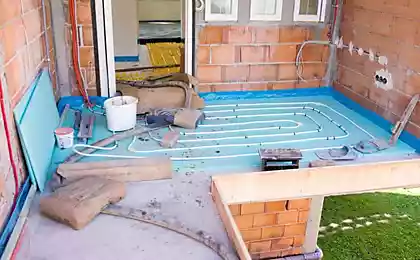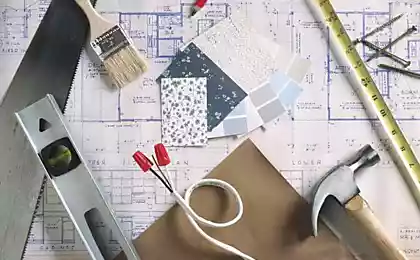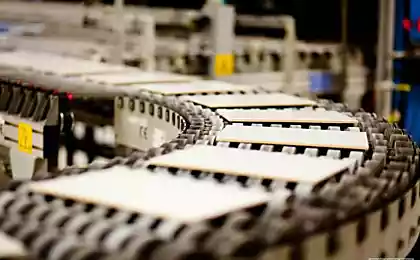1581
Flooring ceramic tiles
Twelve million eight hundred fifteen thousand six hundred sixty nine
Ceramic tile has high performance. They provide a wide popularity and extensive in scope. Manufacture of ceramic tiles started its history in Germany. It was established in the picturesque town of Mettlach around the middle of the twentieth century. This tile is not affected by acids and alkalis, and has a small thickness. The most popular ceramic square elements with a size of 200x200 mm.

From the point of view of aesthetic and functional properties of the tile are divided into three classes. Tiles belonging to 1 class, should not have functional defect, so they should be no chips or other flaws. On the tiles II grade admit the existence of minor defects and is considered normal the presence of two chips with a small diameter. The tiles III grades do not apply strict requirements, so this includes all the products that are not included in the first two. However, the percentage of grade III tiles can not be more than 10%. Therefore, buying tiles, buyers need to be careful.

Of course, the producers have no purpose to do poor quality tile, but the process of production presupposes the existence of marriage. That is why there is the division of the tiles into various grades. The buyer should not succumb to the temptation of purchasing tiles at a low cost. Depending on the varieties chosen method of transportation and storage. The tiles of the first two categories come in boxes. The remaining tiles will just bind with a cord.
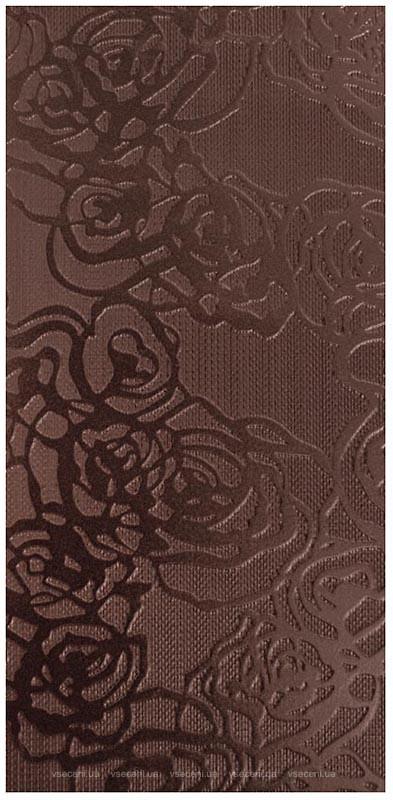
Ceramic tile is a versatile and beautiful flooring. To lay ceramic tile, you should spend measurements of the room – this will allow you to calculate the required amount of material. The next step is to prepare the facing surface. Only then can you start laying the tiles. In the final stage, the grouting between the tiles. In certain cases, you can arrange tile floors without prior alignment, but the surface must be smooth or have very small defects.
Minor flaws the floor you can remove tile adhesive, but keep in mind that a superficial approach to styling can slow down the whole process. Therefore, it is preferable to make a preliminary alignment of the surface to facilitate workflow. Ceramic floors can be laid with curved, linear, or diagonal masonry. The choice of method of installation depends on the size of the room. As a rule, the diagonal method is used in order to visually expand the surface. Also, this type of floor is suitable for large rooms. If you equip the floors in a standard way with uniform stitches, you need to use a special TIC. They easily can be purchased in stores materials. Laying a tiled floor will need the following props: level, bucket, spatulas, mixer, range, and tile.
In the process of laying tile may require drilling, cutting and oleska material. The tiles can be cut using a mechanical or hand tools. Mechanical device will make the process faster. Such a tool will not only help to keep a flat size, but also make and cut narrow strips. But you can also use a hand tool if the volume of the room is small. To do this, strongly pressed disc cutter and make the cuts. The resulting irregularities can be removed with a spatula. You can pre-buy some CDs, because they quickly blunt.
The floors will need to ensure that under the tiles was not formed and void. At the same time can make installation of the center crosses. If the position of the tiles needed to change, then it should be done immediately because the glue can quickly grab. On average, a tile can be adjusted within 15 minutes.
If you plan to veneer not only floor but also walls, the first thing you need to do the floor. In the process of laying tile may be glue from the joints. To remove residues of the glue, use a rubber spatula and a rag. As a result, the seam should be free by 3 mm in depth. If the space is smaller, the grout will have a too thin layer, and will sleep. The primary solidification of the grout occurs, as a rule, in half an hour. The surplus should be eliminated with a wet sponge. The final drying of the grout occurs within two days. After this time you can walk along the seams with a special protective composition. Mounted crosses can be removed at the end of the day after work.

Ceramic tile has high performance. They provide a wide popularity and extensive in scope. Manufacture of ceramic tiles started its history in Germany. It was established in the picturesque town of Mettlach around the middle of the twentieth century. This tile is not affected by acids and alkalis, and has a small thickness. The most popular ceramic square elements with a size of 200x200 mm.

From the point of view of aesthetic and functional properties of the tile are divided into three classes. Tiles belonging to 1 class, should not have functional defect, so they should be no chips or other flaws. On the tiles II grade admit the existence of minor defects and is considered normal the presence of two chips with a small diameter. The tiles III grades do not apply strict requirements, so this includes all the products that are not included in the first two. However, the percentage of grade III tiles can not be more than 10%. Therefore, buying tiles, buyers need to be careful.

Of course, the producers have no purpose to do poor quality tile, but the process of production presupposes the existence of marriage. That is why there is the division of the tiles into various grades. The buyer should not succumb to the temptation of purchasing tiles at a low cost. Depending on the varieties chosen method of transportation and storage. The tiles of the first two categories come in boxes. The remaining tiles will just bind with a cord.

Ceramic tile is a versatile and beautiful flooring. To lay ceramic tile, you should spend measurements of the room – this will allow you to calculate the required amount of material. The next step is to prepare the facing surface. Only then can you start laying the tiles. In the final stage, the grouting between the tiles. In certain cases, you can arrange tile floors without prior alignment, but the surface must be smooth or have very small defects.
Minor flaws the floor you can remove tile adhesive, but keep in mind that a superficial approach to styling can slow down the whole process. Therefore, it is preferable to make a preliminary alignment of the surface to facilitate workflow. Ceramic floors can be laid with curved, linear, or diagonal masonry. The choice of method of installation depends on the size of the room. As a rule, the diagonal method is used in order to visually expand the surface. Also, this type of floor is suitable for large rooms. If you equip the floors in a standard way with uniform stitches, you need to use a special TIC. They easily can be purchased in stores materials. Laying a tiled floor will need the following props: level, bucket, spatulas, mixer, range, and tile.
In the process of laying tile may require drilling, cutting and oleska material. The tiles can be cut using a mechanical or hand tools. Mechanical device will make the process faster. Such a tool will not only help to keep a flat size, but also make and cut narrow strips. But you can also use a hand tool if the volume of the room is small. To do this, strongly pressed disc cutter and make the cuts. The resulting irregularities can be removed with a spatula. You can pre-buy some CDs, because they quickly blunt.
The floors will need to ensure that under the tiles was not formed and void. At the same time can make installation of the center crosses. If the position of the tiles needed to change, then it should be done immediately because the glue can quickly grab. On average, a tile can be adjusted within 15 minutes.
If you plan to veneer not only floor but also walls, the first thing you need to do the floor. In the process of laying tile may be glue from the joints. To remove residues of the glue, use a rubber spatula and a rag. As a result, the seam should be free by 3 mm in depth. If the space is smaller, the grout will have a too thin layer, and will sleep. The primary solidification of the grout occurs, as a rule, in half an hour. The surplus should be eliminated with a wet sponge. The final drying of the grout occurs within two days. After this time you can walk along the seams with a special protective composition. Mounted crosses can be removed at the end of the day after work.



